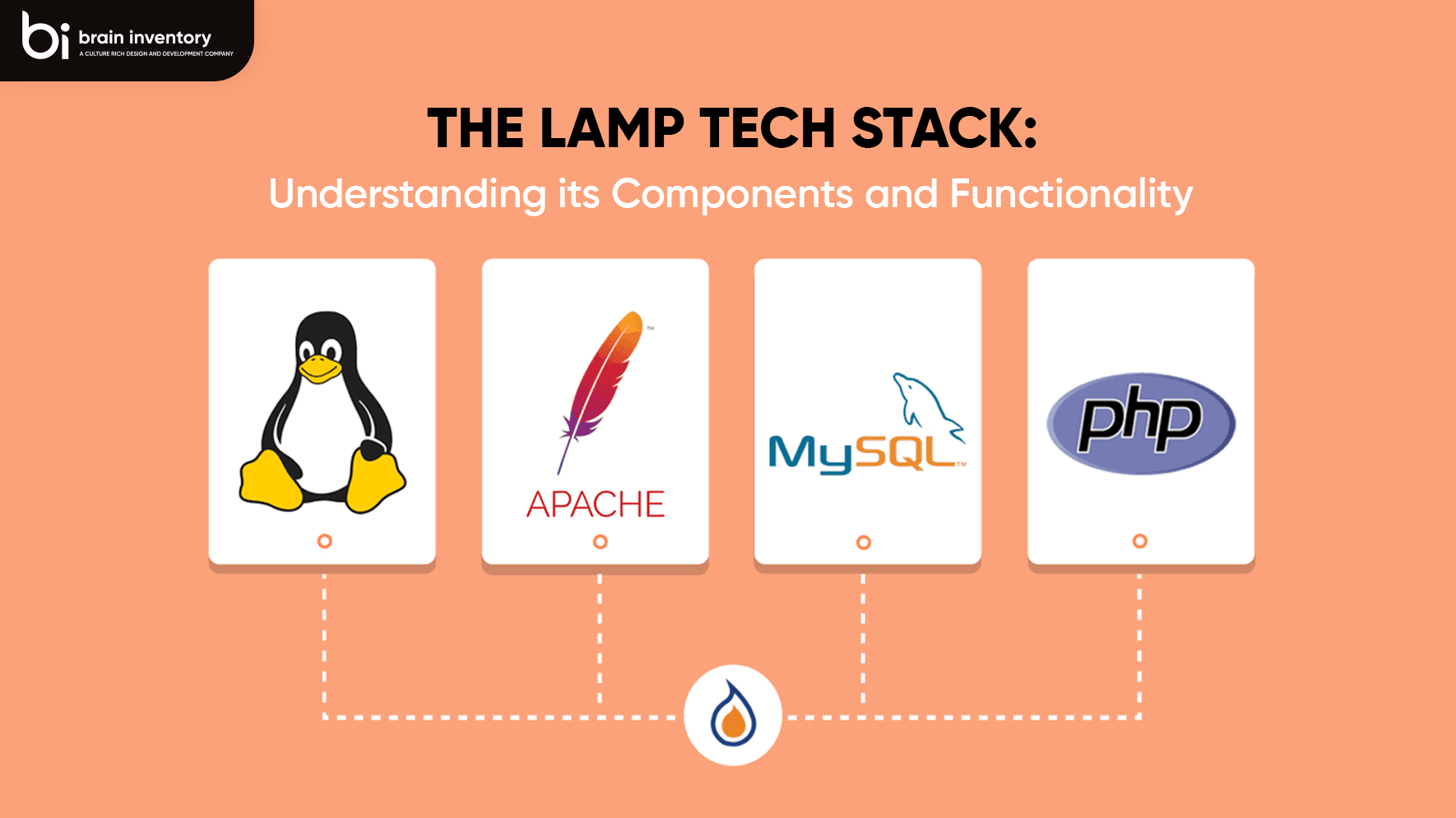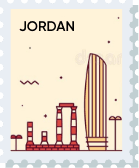The LAMP Tech Stack: Understanding its Components and Functionality

Quick Summary: The LAMP tech stack is a model that details the software packages required to run dynamic websites and web applications. The acronym LAMP stands for Linux, Apache, MySQL, and PHP (or Perl or Python). There are other variants of this stack such as WAMP for Microsoft Windows or MAMP for Macintosh. These four distinct open-source technologies have quickly become some of the most commonly used solutions for technical infrastructure on the Internet.
Four Layers of A LAMP Stack? – LAMP Stack Components & Architecture
A LAMP stack is a popular and widely used set of open-source software components that work together to enable the hosting and deployment of web applications. LAMP stands for Linux, Apache, MySQL, and PHP/Perl/Python, which are the four main components of the stack. Each component plays a specific role in the architecture of a LAMP stack:
Linux: The operating system that serves as the foundation for the entire stack. Linux provides the environment on which the other components can run. It offers stability, security, and flexibility. Common Linux distributions used in LAMP stacks include Ubuntu, CentOS, and Debian.
Apache: The web server software that handles the HTTP requests from clients (typically web browsers) and serves web content, such as HTML files, images, and other resources. Apache is highly configurable and supports various modules that enhance its functionality. It’s responsible for managing incoming requests and routing them to the appropriate application.
MySQL: The relational database management system (RDBMS) that stores and manages the application’s data. MySQL provides a structured way to store, retrieve, update, and manage data using SQL (Structured Query Language). It’s a key component for dynamic web applications that require persistent data storage.
PHP/Perl/Python: The scripting languages used to develop the dynamic content and logic of web applications. One of these languages is typically chosen to write the server-side code that interacts with the database, processes user inputs, and generates dynamic HTML content to be served by Apache. These languages allow developers to create interactive and feature-rich web applications.
In recent variations, the acronym LAMP has sometimes been extended to include additional components, resulting in variations such as:
- LAMP Stack: Linux, Apache, MySQL, PHP/Perl/Python.
- LEMP Stack: Linux, Nginx (pronounced “Engine-X”), MySQL, PHP/Perl/Python. (Nginx is an alternative to Apache as the web server.)
- MEAN Stack: MongoDB, Express.js, AngularJS (or Angular), Node.js. (Used for full-stack JavaScript development.)
- MERN Stack: MongoDB, Express.js, React, Node.js. (Similar to MEAN, but with React instead of Angular.)
Why LAMP Stack Is Chosen the Most?
Flexibility Trait:
LAMP stack is the best stack for developing dynamic web applications using open-source software components. Although it does not offer you handholding capabilities as a turnkey solution to development, It uses common tools available in today’s market and hence can be efficiently used by any web developer. The stack can be implemented through either source installation directly from the central repository or through a virtual machine.
Efficiency Trait:
The LAMP stack is a set of software that enables the deployment of a web server. This includes Linux as the operating system, Apache web server, MySQL database, and PHP programming language. Even though this stack has its own drawbacks it’s praised to be efficient in lowering the development time. The modern-day LAMP stacks having been around for over a decade are now being used by the majority of the sites on the Net.
Capacity Trait:
Lamp is an open-source solution for developing web applications. It’s a flexible, modular platform that can be extended with different languages, frameworks, and systems of data storage. Lamp features many solutions for building both websites and web applications, such as dynamic components, PHP support, and database management features. Developers can use the tools provided by Lamp to create custom features that will propose multiple ways of customizing content.
What Are the Benefits of LAMP Stack?
Let’s explore the benefits of the LAMP stack development that specifically cater to developers.
Free and Open Source: It is clear that the LAMP stack is free of cost and free of license. As you can download these elements free of cost, it’s the core point of interaction for users who don’t want to make their deep pockets feel lighter while developing websites. Them being open source, you can enhance them to your complete convenience and improve their performance to showcase your content in a better manner.
Platform Independent: This is a simple program that allows you to manage your accounts on the go. The code is efficient and accurate and can work on various operating systems, including Linux, Windows, iOS, and Android. To create this application, you should use Java. The program uses TCP protocol to send commands to the exchange server. Furthermore, it uses JSON-RPC API for creating a connection with the server and sending requests. The response from the server also uses JSON format.
Support Community: This is a directory of community-driven and open-source solutions for general developers. It comprises input from a group of experts as well as other active members. I hope this collection of tools will be helpful to all the developers, who are looking for an alternate solution to provide better services without breaking a sweat. The resources provided here are diverse in variety; however, each one has been assessed and reviewed before getting listed. Niches addressed include development tools, productivity software, website creation platforms, performance support, and many more.
Easy Set-Up: You can be up and running with a LAMP stack very quickly.
Security: As a private smart contract platform, Lamp allows enterprises to build applications and handle sensitive business processes in a secure ecosystem. It enables connectivity among different systems which has been earlier impossible due to policy and technical reasons.
Scalable: LAMP architecture (free software) is an example of technology that will adapt by adjusting the number of servers needed to fulfill a large number of requests. It’s also inexpensive to maintain a LAMP infrastructure.
Customization: Apache is a popular open-source web server that offers a lot of improvements over previous versions. It’s primarily designed to handle HTTP requests and serves static content easily. Also, the Apache community is constantly innovating, so you can find creative ways to accelerate your websites with its efficient features and APIs.
Conclusion
The acronym LAMP is short for Linux, Apache, MySQL, and PHP, which are the components that make up the LAMP platform. One key differentiator from other solutions such as Microsoft .NET Framework or Java is the fact that this set of open-source components is not vulnerable to patenting and licensing costs. Therefore, it is a good option for small to medium-sized businesses or anyone who wants a mature and cost-effective platform for software development. Brain Inventory is a LAMP stack development company offering experienced LAMP developers with experience in building and maintaining e-commerce, content management, custom applications development, and mobile applications. BI success comes from our in-house development teams being able to understand your needs and deliver the best result, every time. Interested? Contact us using this form and let’s talk more!

Have an idea?
Get in touch, we’d be
happy to hear from you
We are always looking out for new collaborations, whether you are a client who is passionate about a project or a talent who is interested in joining our team, our doors are always open.
locate us

India (HQ)
618, Shekhar Central, Palasia Square, A.B Road, Indore, Madhya Pradesh, 452001
+918109561401

United Kingdom
Brain Inventory, SBVS, 8 Roundhay Road, Leeds, UK, LS7 1AB
+18008209286

Canada
44 Main Street East Milton, ONCanada L9T 1N3
+4166696505

Jordan
185 Wasfi Al-Tal Street, Ammon Oasis Complex P.O Box 4724 Amman 11953 Jordan
+960770781000

USA
720 Seneca St Ste 107 Seattle, USA 98101
+1(206)6533419
if it's digital,we'll make it.
- Numetric - Online Accounting Software similar to QuickBooks
- Bloomia - Kegel exercise
- Virifi - Blockchain Powered Document Certification & Signing Platform
- Revolution Travel CRM - Custom CRM Built for Travel Agents
- Fatoura - Online Invoicing Platform
- My Fit Mantra - Your health partner
- Ocureel - Relation Building and video sharing Application